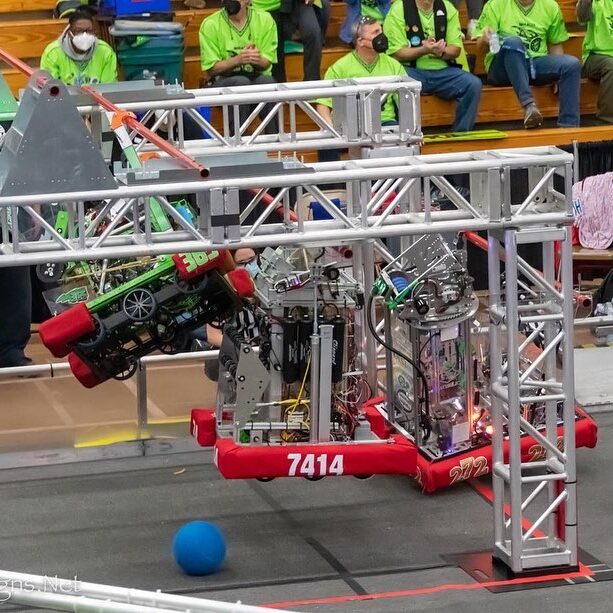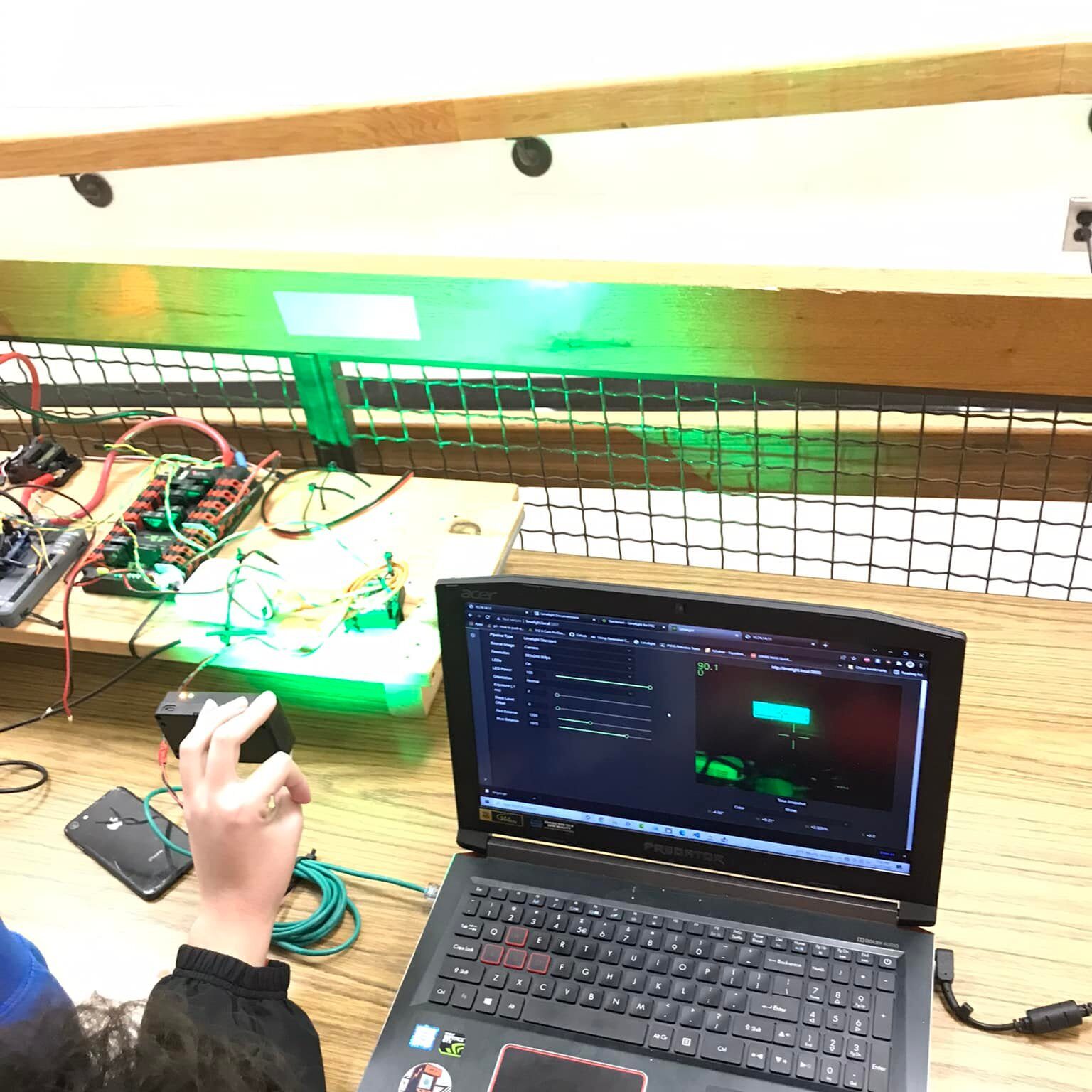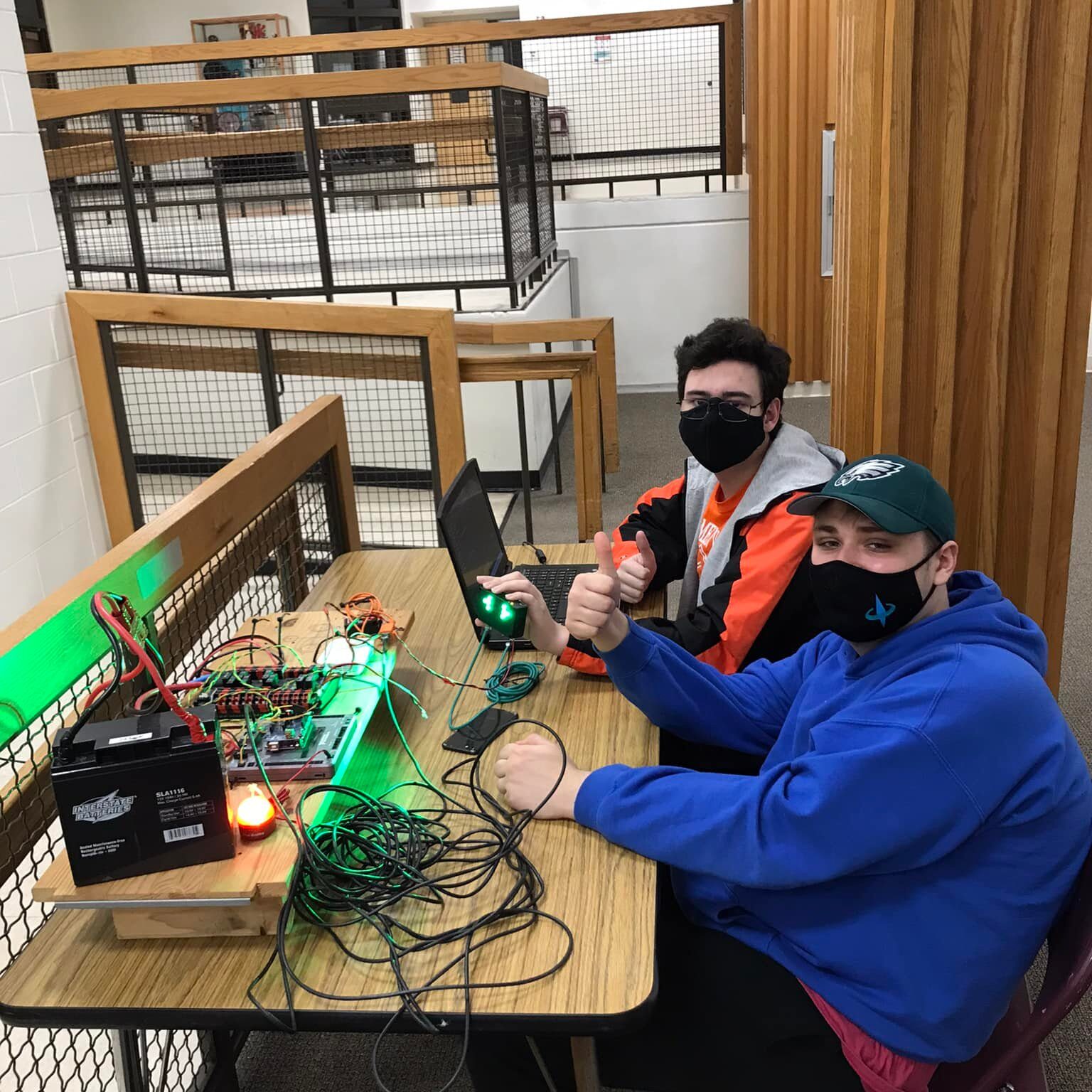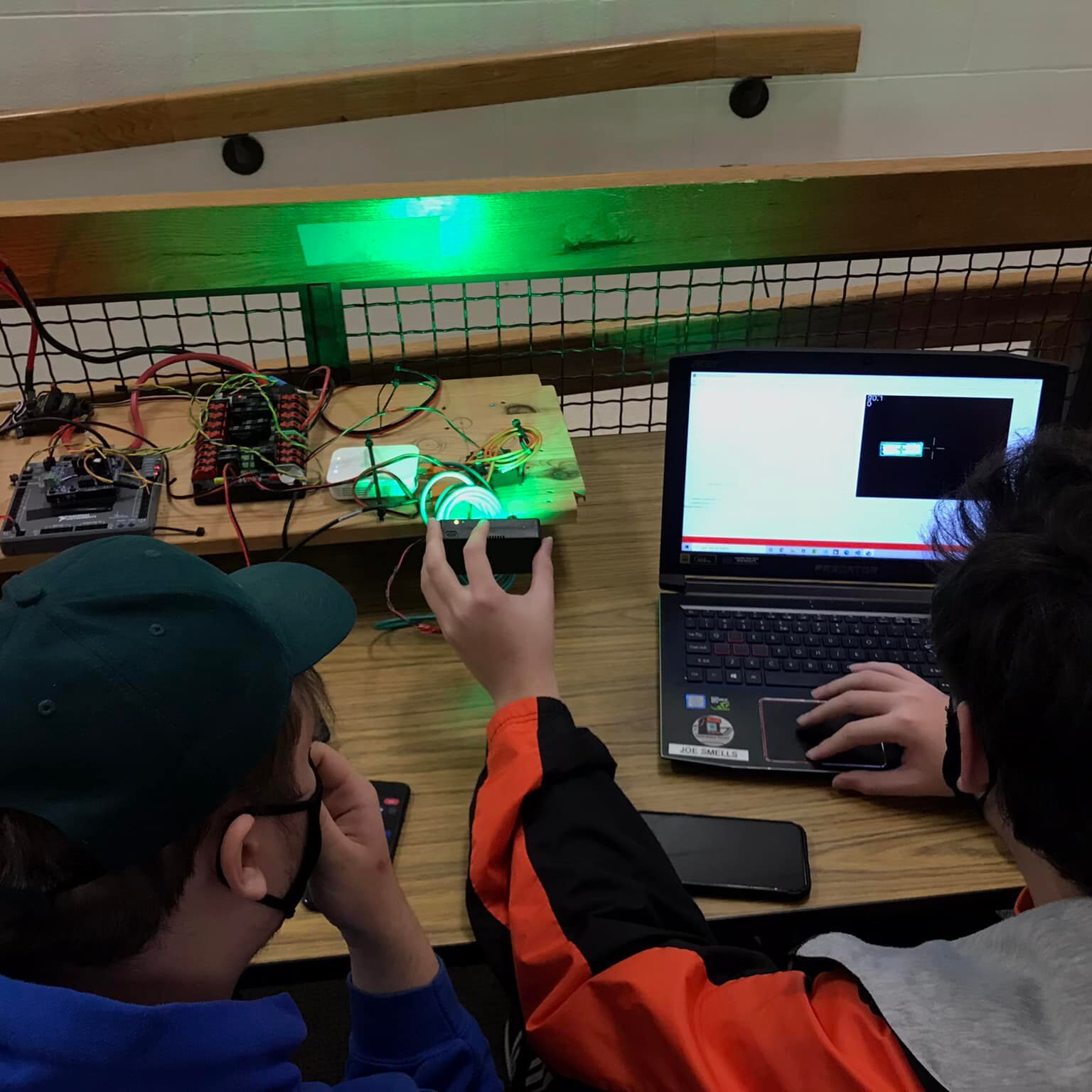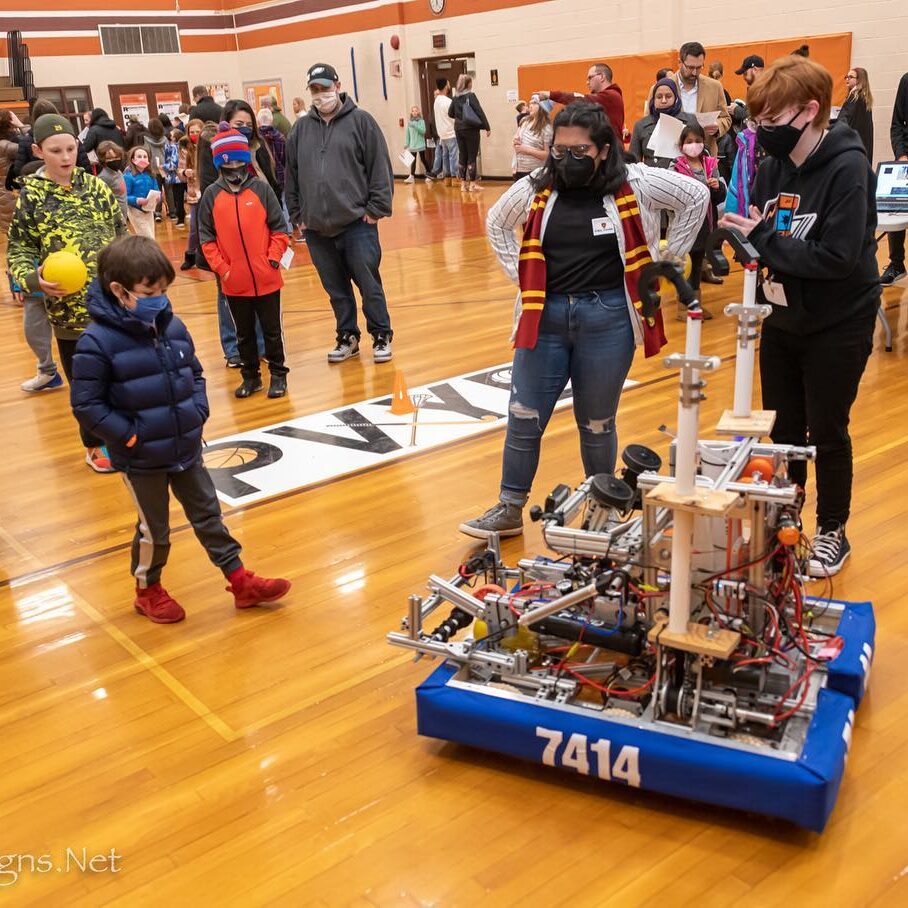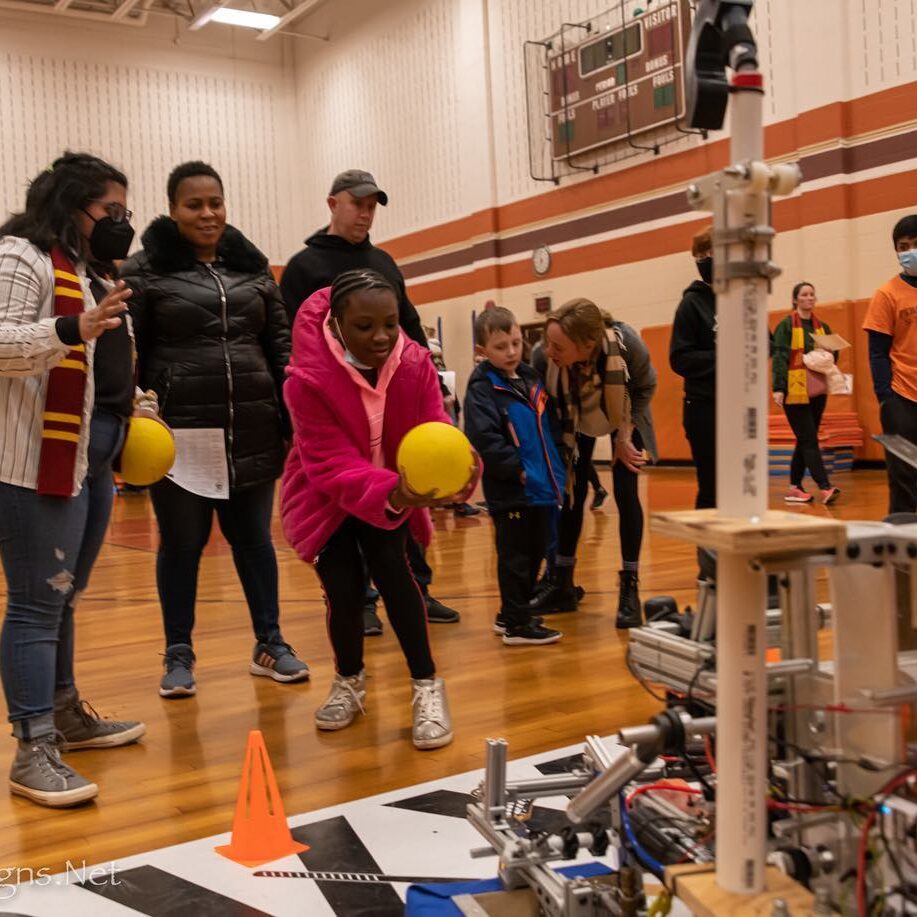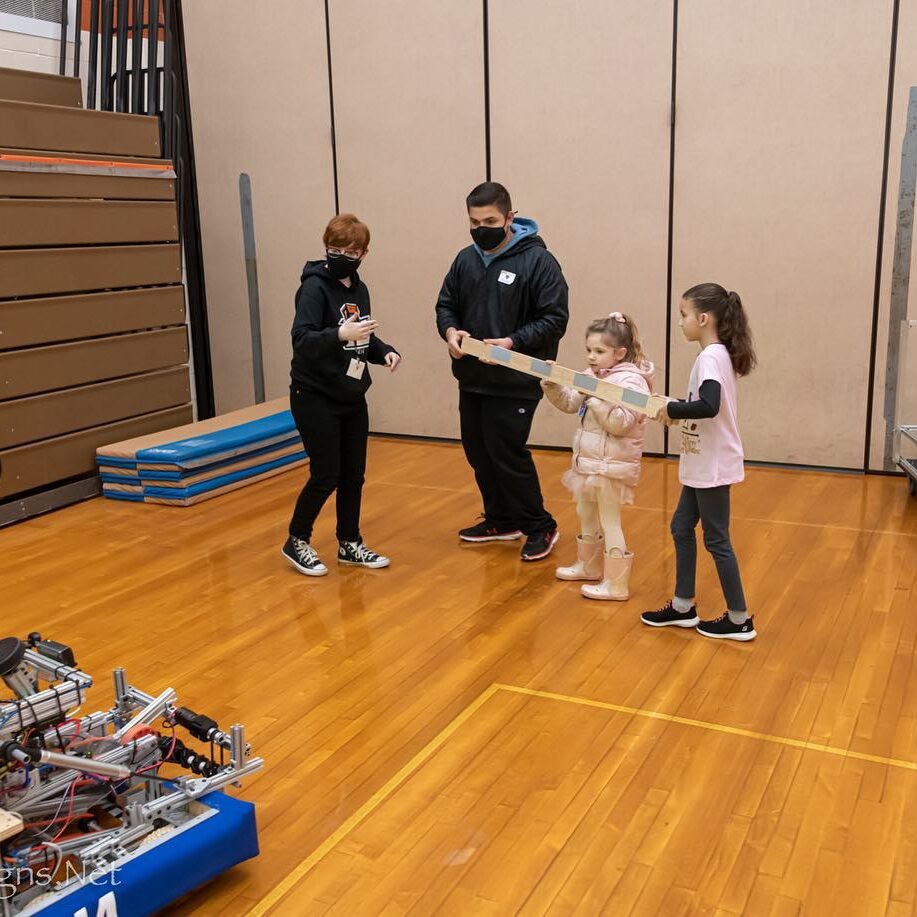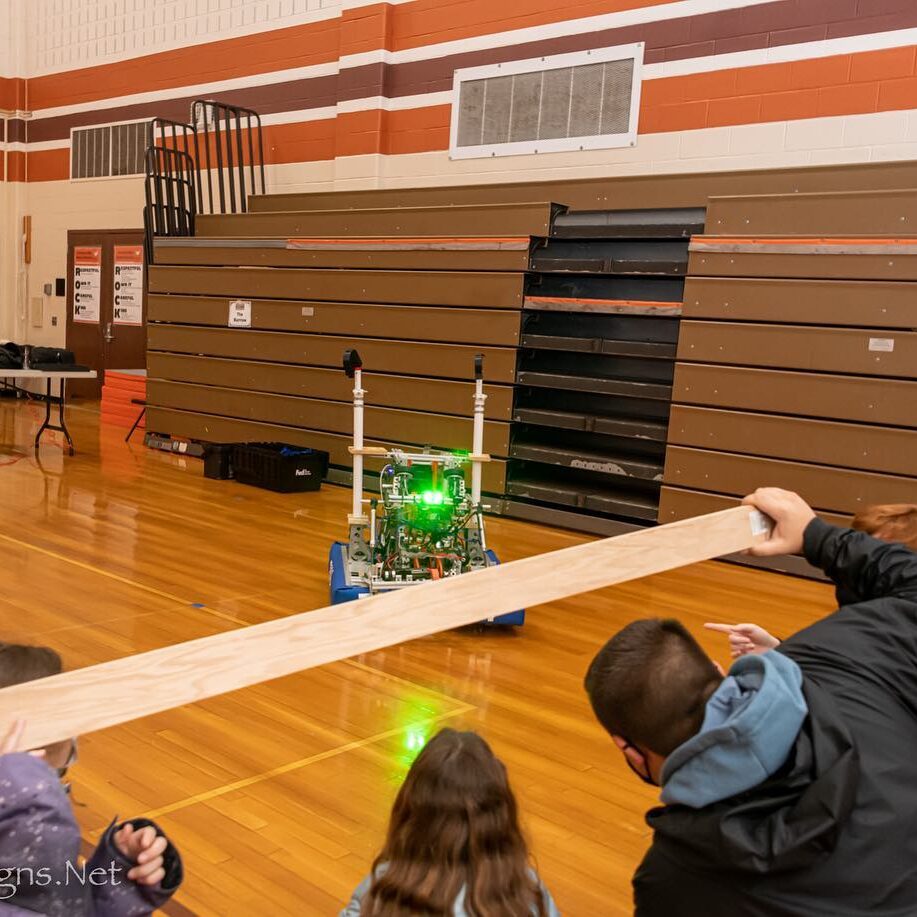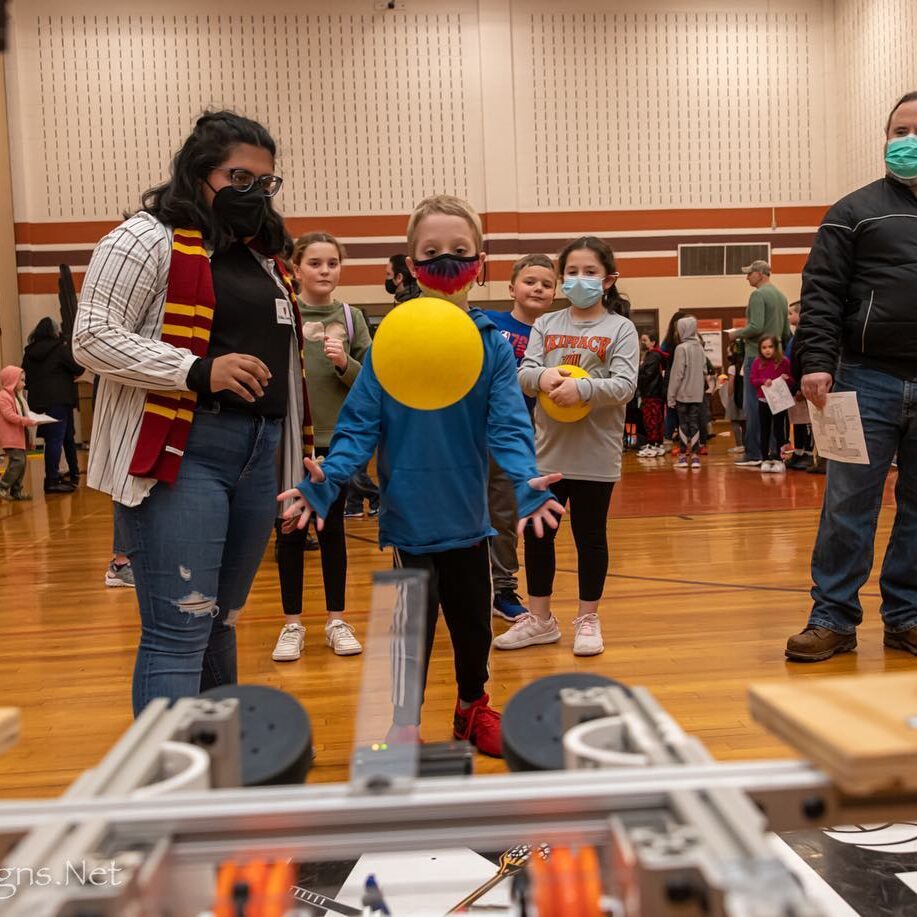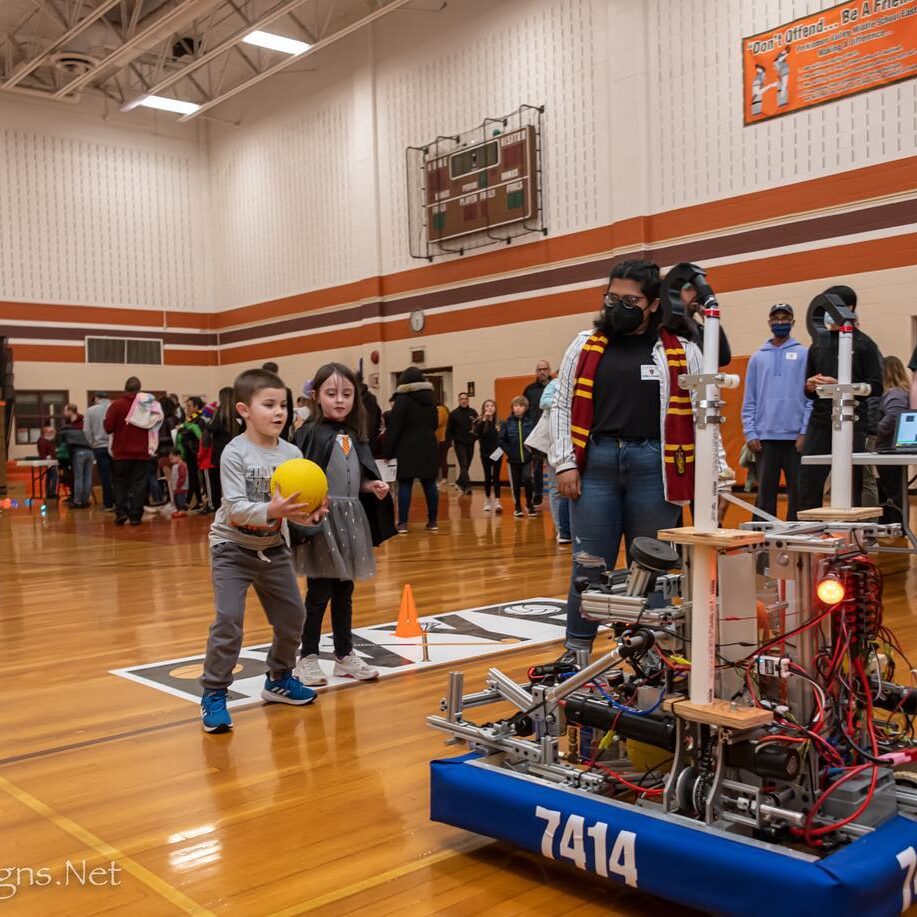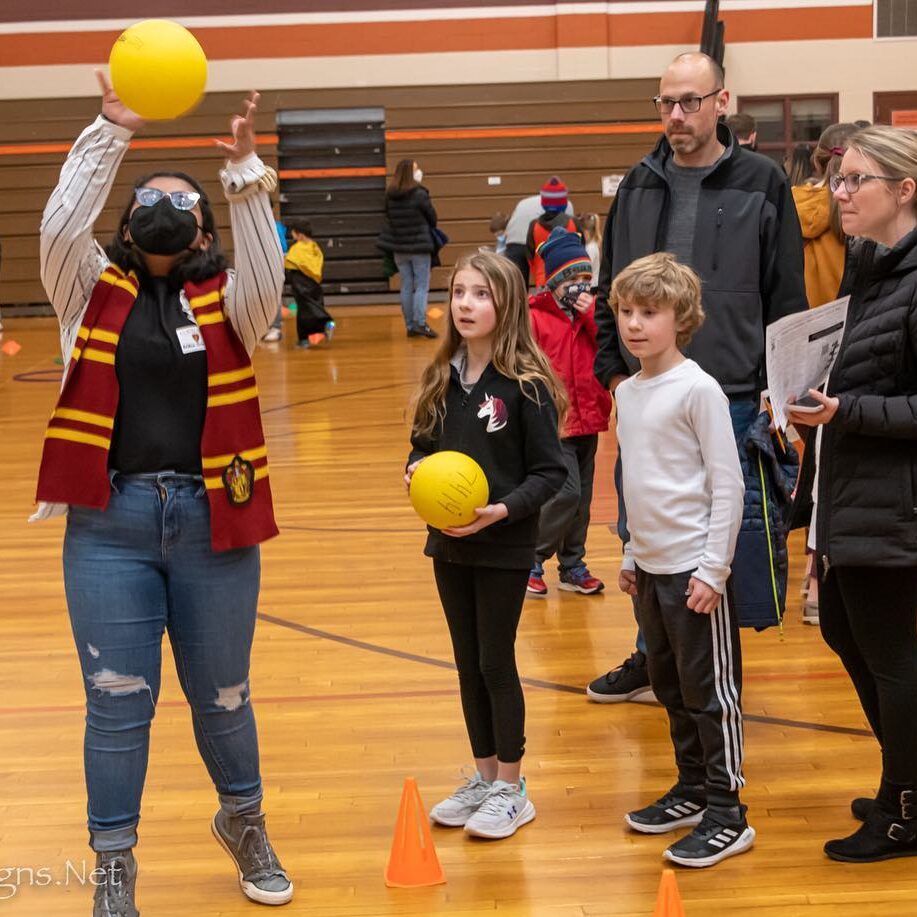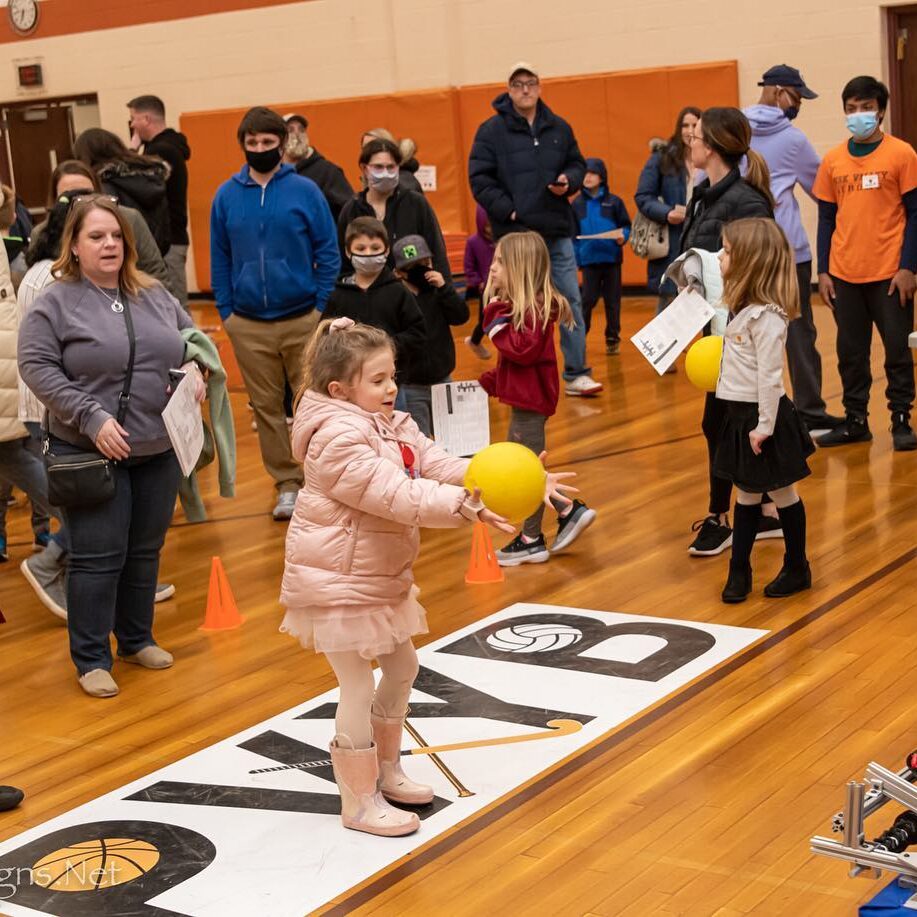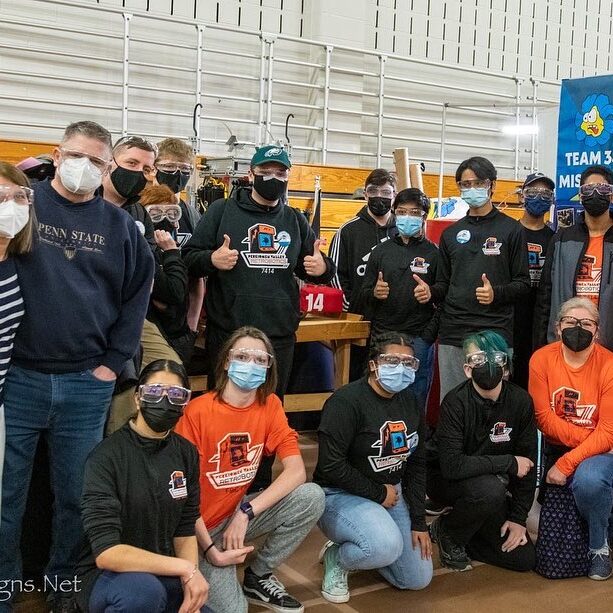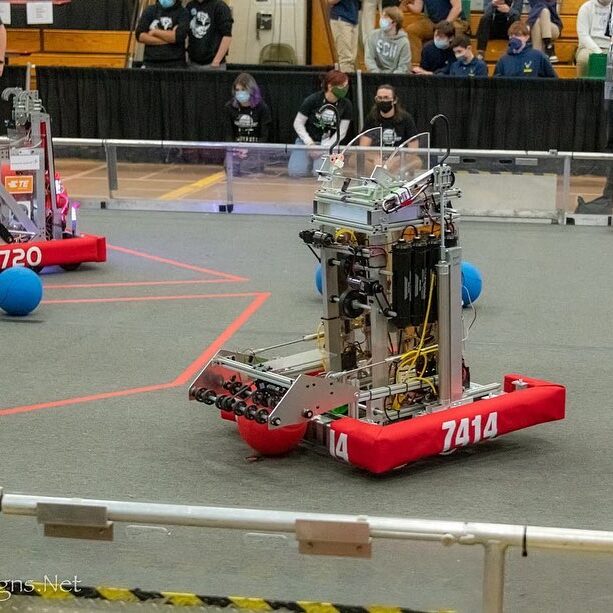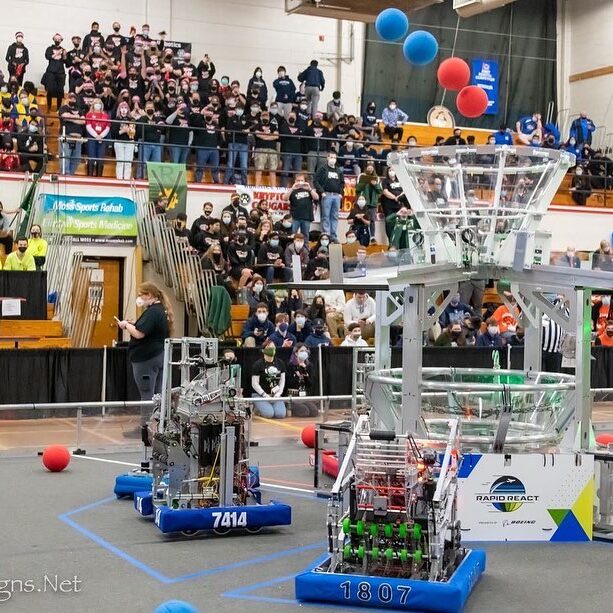Limelight
Images courtesy of Perkiomen Valley Robotics Team RetroRobotics Frc7414 Facebook Page
In February 2022, Perkiomen Valley School District Foundation awarded the Robotics Club at Perkiomen Valley High School with a limelight that they could implement into their robot for competition. In the 2022 season, the Robotics Club needed to build a robot that could shoot balls into a specific hub on the playing field.
Why a limelight?
The limelight solved two problems. In the primary portion of the match, one student drives the robot, and a second student operates the launcher and intake. If the robot’s “view” is obscured on the playing field, it is difficult to target the goal. At this point, the student controlling the launcher activates the limelight, taking control from the driver, which automatically positions the robot and sets the launcher distance by calculating the angle and shape of reflective tape it “sees.”
The second problem is during the autonomous period where there is no student input, and the robot is controlled via software. The goal is to score as many cargo (large balls) as possible. The game allows the Robotics Team to pre-load one cargo, and their goal was to intake a second cargo and shoot both within the initial 15 seconds autonomous period. To achieve this, the Robotics Club starts with the robot pointing at an angle towards the second cargo, allowing the robot to move forward and intake the second cargo. Unfortunately, once the robot picks up the second cargo, it is misaligned with the target when it returns to a proper shooting position. The limelight points the robot at the target autonomously.
The Learning Process
The Robotics Team encountered two challenges with the limelight, but in any educational environment, students were able to learn and create solutions to these problems. The first the team was aware of from last year. The limelight works by reflecting a bright green light off of reflective tape. The video image is used to “see” specific shapes, which the team measures mathematically. The competition field has lots of reflective surfaces (plexiglass windows, aluminum beams & bright lights) in addition to the tape on the target. The device can “see” these items as reflective tape, pointing the robot in the wrong direction or misjudging the distance. The team extensively trained the algorithm to ignore these materials. This process was quite complex, and the group called upon the expertise of a former Robotics Team member who is now in college.
The second challenge involved the target’s height (10’) and the proximity to the goal. The robot must be close to the goal to prevent the cargo from bouncing. This resulted in a very steep angle between the limelight device and the reflective tape. We needed to iterate with the code and angle of the limelight to make it work properly. We were unable to complete this calibration successfully until our second tournament.
Season Progress
During the season, the limelight improved the Robotics Team’s shooting accuracy and would not have been able to score a second cargo in autonomous without the device. Points are doubled during the autonomous period. Our Robotics Team had a scoring advantage above many teams by scoring two cargo balls within the autonomous period.
The limelight was not the only reason for the Robotics Team’s strong performance this year, but it was a strong contributor. In the first tournament without the limelight, they placed 11th out of 36 teams. After the competition, they came back and calibrated the limelight for the second competition, the Bensalem District event, where we won! Based on their performance at both events, they progressed to the Mid-Atlantic regional championship (there are only 11 regions in the country). They were the youngest of 126 teams to qualify based on performance and ranked 37th overall.
What’s next for the Robotics Club?
The Robotics Club is hoping to make it in the top 20 to go to the World Championship in Houston!
Support Projects like the Robotics Limelight
Teachers don’t always have access to materials, technology, and other resources that can make the difference between a lesson that is forgotten the next day to one that lasts beyond graduation. That’s where you come in. Your contribution to the PVSD Foundation helps ensure that the Foundation can continue to support teachers in their delivery of enriching educational opportunities for all students when tax dollars and traditional streams of revenue fall short.

